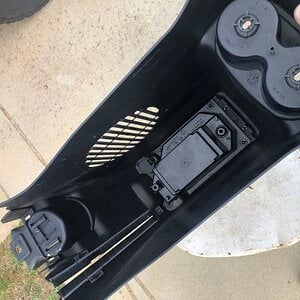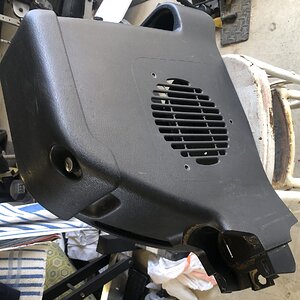And voltages spike and dips are going to be much worse with a sub with a monster magnet and 3000w and 50mm xmax trying to play 20 hz and then up to 50 hz, for example, vs a door speaker. When you have a half-bridge amp, your electrical system seems to add to the damping, depending on overall capacity and rate of charge. Full bridge and half bridge amps work differently, especially with the power supplies, and you can see that in the damping factor, based off how exactly those power supplies differ, from all of my experience. Half bridge amps seem to be able to control the woofers better with their power supply design, if you have good electrical, because they can pulse both polarities back into your 12v system. We aren’t talking about simply speakers but subwoofers, and subwoofers have a much different dynamic with their higher x-max and these crazy power levels with these crazy motors that can cause massive spikes during an unloading situation. Like I said, it’s what I look for, because I think it’s a hidden quality factor SPECIFICALLY with sub amps.
Check out the damping factor with those **** full bridge Chinese amps you hate, if they even list it.
OK, I will speak only from experience with my personal builds/amps I've ran in the past.
Boston Acoustics Gt-2300 at 4 ohm. This amp doesn't list damping factor, but it's a class a/b surfboard that I loved. I ran a few different subs on it, a pair of SA-8's, a single TC9 based 12 with oem soft parts, and a pair of JBL W15gti subs.
Saz-1500d and 2500d 4 and 2 ohm on both. I beleive these have a damping factor of 350 or so. Great little amps, ran them on the same 3 subs as the Boston.
Mmats D2100.2, can't find a manual for this one or the newer M series amp. This one ran the JBL subs only.
Helix M one, damping factor of 100. Ran this on a Kicker CVR 12(old school 2010-ish model) a 10w6v2 and a TC pro-5100 hybrid.
Taramps Smart 3 no damping factor listed. This has powered the Kicker, the W6, and the TC.
Out of all of these combinations, the amp had the least impact on the sound. Most of my subs have been ran "infinite baffle" in a ~16 cubic trunk baffle so damping factor should be super important. Honestly, the Mmats sounded the best on the JBL subs, and I prefer the taramps over the Helix on the TC sub.
But hey, I'm just a pleb that likes big cone area and expensive front stages.
Matt
Edit:
I like the smart 3 so much, I just bought a smart 5 for more power. I don't personally think damping factor plays a huge role with subs. I can see it making a difference with small-lighter speakers like 3" midrange drivers that are changing direction thousands of times a second, but for subwoofers, inductance values would be more of a factor than damping factor from what I've read/experienced.


